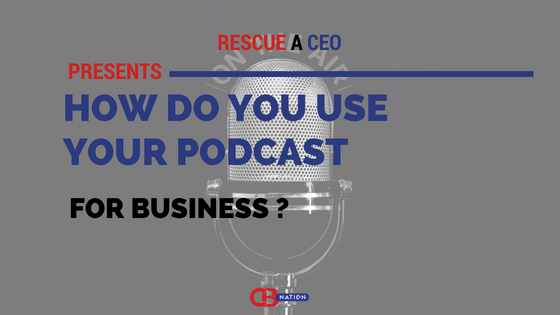Prioritizing a security technology plan is crucial to protect an organization's assets and data from potential cyber threats. This involves identifying the most critical assets and assessing potential threats against them. Regular risk assessments and vulnerability testing can help prioritize security investments and address the most pressing threats first. A layered approach to security, along with a dedicated cybersecurity team, can further enhance an organization's overall security posture.
We asked entrepreneurs to share how they are prioritizing their security technology plan, and here are the responses:
#1- By maintaining a culture of security

When it comes to prioritizing a security technology plan, it's important to first maintain a culture of security within the business. This means developing policies and procedures that will help to mitigate the risks associated with cyberattacks. This includes having a formal incident response plan, regularly training employees on best security practices, and making sure that all software and systems are up-to-date.
Thanks to Carmelo Carrasco, Axel Property Management!
#2- Partnering with renowned entities

One of our topmost priorities lies in ensuring the durability and security of our organization's data. With a view to achieving this, we have taken robust measures, such as partnering with renowned entities like Google and Dropbox, for the purpose of utilizing their secure data storage platforms. Furthermore, we have implemented a stringent backup strategy that encompasses encrypted backups of all critical documents and website assets.
Thanks to Joseph Onifade, MakeThatContent!
#3- Prioritizing risk assessment for security

One of the first steps we take is to conduct a comprehensive risk assessment. This helps us identify potential vulnerabilities in our systems and determine which security measures we need to prioritize. For example, if we determine that we're at a higher risk for phishing attacks, we might prioritize implementing multi-factor authentication or training our employees on how to spot and avoid phishing scams. We also ensure to keep our software and systems up to date with the latest security patches. This helps to close any potential security holes that could be exploited by hackers.
Thanks to Liwen Neesom, Soft Geeker!
#4- By identifying potential security threats

As a CEO, the first step in prioritizing my security technology plan is to conduct a risk assessment. This involves identifying potential security threats and vulnerabilities, assessing the likelihood of an attack, and determining the potential impact on our business. Based on this assessment, I prioritize the security technologies that can best address our most significant risks.
Thanks to Sameera Sullivan, Sameera Sullivan Matchmakers!
#5- By risk management

I believe every business is important, especially for the owners as well as employees too, and if you want to keep it safe and secure you must not leave a single chance to breach its security by any means. For that to happen, we at Carnivorestyle sit together and discuss the possible risks that could occur, we share our thoughts on where we stand on the grounds of security and if we have room for its failure. It really helps to define your possible risks and the concurrent ones to plan a strong security plan.
Thanks to Timothy Woods, Carnivore Style!
#6- Employee training and implementation

Security is one of the key pillars for us here at Belkins. We are constantly prioritizing our security technology plan, mainly by changing up our other processes so that they better comply without security technology. In business, security does not bow to other processes, other processes must be adapted to match the security plan. Our priority today mainly revolves around training and teaching our employees to follow the best security practices and be comfortable using the technology that enables security.
Thanks to Michael Maximoff, Belkins!
#7- Regular security updates

Data theft is something that is occurring all over the world today. Keeping the client's data safe is one of our major priorities. Many automation tools can be used to keep up a perfect security plan. Security tools to avoid any anonymous login into the database of the company can be used. Keeping the security tool regularly updated to keep up with the new features is necessary. Some tools allow employees access to the data only that they are required to work upon.
Thanks to Ray Pierce, Zippy Cash for Cars!
#8- By identifying vital assets

The first step in evaluating your security technology plan is to identify the important assets that must be protected. Confidential material, financial details, proprietary information, and consumer information could all be included. Once you've discovered such resources, you can direct your security efforts toward protecting them by conducting a risk assessment. This can assist you in identifying significant risks and weaknesses that may have an impact on your vital assets.
Thanks to Nick Musica, Cash For Your Junk Car!
#9- Prioritizing email security measures

I am prioritizing my security technology plan by implementing email security measures. This includes using spam filters and email security software to detect and prevent phishing attacks and malware infections, as well as implementing email encryption software to protect sensitive information transmitted via email. I am training my employees on how to identify and avoid phishing emails and other email scams. By prioritizing email security measures, I can protect my company's sensitive information, and reduce the risk of a successful cyber attack.
Thanks to Percy Grunwald, Hosting Data!
#10- Thorough security technology plan

Keeping our technology platform secure is one of our top objectives because it contains data and information about our clients' automobiles. To do this, we have developed a thorough security technology plan that calls for ongoing security measure evaluation, monitoring, and improvement to stay up with emerging threats and industry standards. To make sure that our platform is secure against any flaws and assaults, we also collaborate closely with cybersecurity professionals.
Thanks to Simon Murray, CameraMatics!
#11- Using a comprehensive security strategy

I prioritize all areas of cyber security, including data protection, encryption, authentication and authorization mechanisms, antivirus software, and firewall solutions. I also focus on ensuring that our physical infrastructure is secure: we use strong passwords on all devices, monitor user access and activities, install CCTV cameras where appropriate, and implement strict access control measures to protect our premises from unauthorized entry. At Sections For Sale, we take our security seriously and ensure that all of our systems are regularly tested and updated.
Thanks to Tom McSherry, Sections For Sale!
#12- By using strong passwords

For me as a business owner, protecting my customers and my company is a top priority. In order to accomplish this, I prioritize strong password policies. Employees are required to create passwords using a combination of numbers, special characters, and upper- and lowercase letters, and to frequently change their passwords. I provide tools such as two-factor authentication, which adds an extra layer of security. As part of our training program, employees receive education on the secure way to store and share data.
Thanks to Hamid Uran, PCB Assembly!
#13- Prioritizing limited access and appropriate tools

Creating a list of all the threats that your company can face is important to create a good security plan. Once you have listed them, having certain plans of limited access to data can help. Usually, all the data of your clients can be available to all your employees. When you allow access to limited data to the employees the slightest risk of data theft is avoided in that. Other than this, using appropriate tools to keep your company's system security is crucial.
Thanks to Richard Chan, Coverright!
#14- By prevention, detection and response

My security technology plan is focused on three main areas: prevention, detection, and response. Prevention strategies include implementing access controls, antivirus software, and firewalls. Detection strategies include monitoring systems for suspicious activity, and responding to threats quickly. Response strategies include having a plan of action in place to minimize the impact of a security breach and taking steps to ensure the security of the system. I am prioritizing these strategies in order of importance, with prevention being the most important.
Thanks to Harman Singh, Cyphere!
#15- Implementing an endpoint plan

Our technology plan started with an audit of the risks we face as a company on our assets, including customer data, company devices, and intellectual properties. After assessing where we were, we proceeded with a layered security protocol to help us secure these assets. Hence, implementing an endpoint management system has allowed us to remain vigilant and quash any threats when they are detected.
Thanks to Alvin Wei, SEOAnt!
#16- By evaluating risks

As business owners, we try to plan our security system by evaluating the risk factor. We do thorough research to determine which of our sections are at risk, and then we work out a plan. This often lets us curate a strategy that helps us move forward. So, this is a simple way: we look at the risks, we plan a strategy, and we implement it with efficiency. This has always kept us one step ahead of others.
Thanks to Jessica Shee, iBoysoft!
#17- By identifying security needs

Our company is based on collecting sensitive data and customer information. This makes us vulnerable. This is because there are countless ways to hack into a system. So, we’ve prioritized our security plan by identifying what needs protection first. And that is definitely the data that we gather. We’ve allocated a solid budget to get the right tools for cybersecurity. This will help our customers to know that their personal information is secure. We’re hoping this plan helps us safeguard all the information.
Thanks to Donnie Rand, American Association of Owner Operators!
#18- By prioritizing top risks

Every organization has many potential security risks. By conducting a security risk analysis, we can determine the most probable risks. A good place to start is by using a list of generally assessed risks to check the risk frequency, and the enormity of security loss in case of an event, to come up with a prioritized list. In some cases, the results have been surprising: events with high-security blows may turn out to have a low probability, while highly prevalent but low-impact events can present the highest risk gradually.
Thanks to Mercy Lilian, Lonelyaxe!
#19- With the help of key security features

Information security is a central objective in our security technology plan. We are prioritizing the need to secure sensitive user data with the help of key security features. Data encryption and two-factor authentication. By adding these two simple features, we can ensure information security (IS). There are other measures, like backing up data and using email filter software. The need to have a secure data system has never been more apparent, which is why these measures are part of our long-term security strategy.
Thanks to Troy Shaffer, Blu Corporate Housing!
#20- Risk-based security plan

I prioritize through both qualitative and quantitative risk prioritization. This approach allows me to assess the potential threats and vulnerabilities that can harm my client's business. I use qualitative analysis to evaluate the severity of threats and their likelihood to occur. On the other hand, quantitative analysis helps me quantify the potential impact of those threats. By combining these two approaches, I can develop a comprehensive security plan that addresses the most critical risks first. This ensures that my clients' data and systems remain secure and protected from cyber-attacks
Thanks to Henffrey M. Muthama, HardwareHow.com!
#21- Putting in place several security measures

SSL Certificate: It will encrypt data between our website and our customer's web browser and protect sensitive info like credit card numbers, passwords, and so. PCI: The Payment Card Industry Data Security Standard (PCI DSS) will ensure the safe handling of credit card information. Regular Updates and Backups: Regularly back up our data to ensure that we have a copy of your website in case of a security breach or other data loss event. Security Monitoring: To detect and respond to security threats in real-time.
Thanks to Rakhi Oswal, Edrio!
#22- Implement zero-trust network access

Formulate a cybersecurity strategy that incorporates the principles of “Never Trust, but Always Verify.” It ensures that unauthorized users or devices cannot access your information network systems. Set up firewalls on all internet and server-accessing devices to prevent malicious actors from penetrating them and causing data leakage. Educate your employees, and sensitize them on the critical aspects of cybersecurity. It ensures the Confidentiality and Availability (CIA Triad) of your information assets.
Thanks to Jack Reynolds, TheGuaranteedLoans!
#23- By budgeting security goals

By aligning our budget with the security goals every quarter we are able to implement security plans efficiently. Making sure that your business remains secure is a complex task however we are able to enhance the probability of success by developing and funding a budget that gives preference to security objectives. By recognizing what requires protection, improving upon existing processes, and building a culture of security, the forthcoming security budget manages to make a significant influence.
Thanks to Isla Sibanda, Privacy Australia!
#24- Through a multi-faceted approach

As the co-founder and experienced security officer, we prioritize security through a multi-faceted approach that includes periodic risk assessments, adherence to ISO and other industry standards, continuous monitoring and improvement, employee training, and a well-defined incident response plan. This comprehensive strategy ensures that our visitor management system remains reliable and secure for our clients while adapting to emerging security trends and threats.
Thanks to Pieter-Jan Dries, Vizito!
#25- By using a prioritization matrix

In order to put our security technology plan at the forefront, we create a prioritization matrix. It helps us identify which project requires cybersecurity the most. The matrix enables us to develop criteria for rating the projects with the most and least need for a security plan. It uses a weighted rating scale for each criterion, such as assigning scores from 1 to 5 to every project. This way, we came up with the overall rating for each project, forming the basis of our evaluation to prioritize projects.
Thanks to Marcus Arcabascio, Hardware Stores!
#26- By conducting a yearly risk-based assessment

At Onshore Mortgage, LLC, we prioritize our security technology plan by conducting a yearly risk-based assessment of our policies, procedures, and digital software. We identify potential threats and vulnerabilities by staying up to date on current threats which are alerted to us by Malwarebytes Pro and CISA. Financial Institutions should develop internal security measures based on the severity of the risks they face and the likelihood of them occurring. Regular reviews and updates to your security plan can help mitigate data breaches and ensure that it remains effective and relevant.
Thanks to Grant Menard, Onshore Mortgage!
#27- Risk-based prioritization

I prioritize my security technology plan based on the needs of my company and the threats we face. The first question I ask when prioritizing is, What are we trying to protect? Once I know what needs to be protected, I can assess the threats against those assets. We have a lot of different things that need protecting: our internal network, and our data center. The best way for me to protect all these different kinds of assets is by using a layered approach to security—one that involves multiple solutions working together seamlessly.
Thanks to Gauri Manglik, Instrumentl!
#28- Data protection strategy

In this day and age, it is only prudent to put great effort into your cybersecurity efforts and safeguard your company from cyber-attacks. Our plan includes storing every piece of important and valuable data on both online and offline platforms. There are backups in the cloud, as well as in the external drives. This takes the highest priority to ensure maximum security of the most crucial information. Moreover, we also make sure to equip every company laptop and other devices, including smartphones, with top-notch antivirus software, as well as have a policy of changing passwords every quarter.
Thanks to Rafal Mlodzki, Passport-Photo Online!
#29- Proactive security management

We undertake risk assessments and vulnerability testing regularly to uncover potential flaws in our systems and applications. This allows us to prioritize our security investments and address the most pressing threats first. We have a dedicated team of cybersecurity professionals in charge of managing our security technology plan. Overall, our firm prioritizes security technology, and we are committed to investing in the resources required to secure our systems and data from potential cyber threats.
Thanks to Matt Kerr, Applianced Geeked!
#30- By ensuring that our systems are up-to-date

As the CEO of my organization, I'm prioritizing our security technology plan by ensuring that all of our systems are up-to-date with the latest software and we use the most secure network connection. I'm making sure we stay aware of any potential vulnerabilities in our systems or networks and regularly review our current security protocols so they meet industry standards. Our team has also developed a user authentication system to further secure access to sensitive information. With these measures in place, I feel confident that our data is as secure as possible.
Thanks to Juan R. Smith, My Gaming Buddies!


















































 |
|